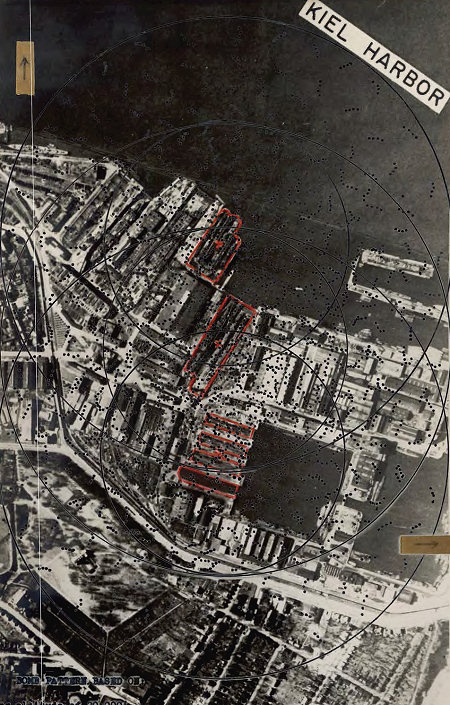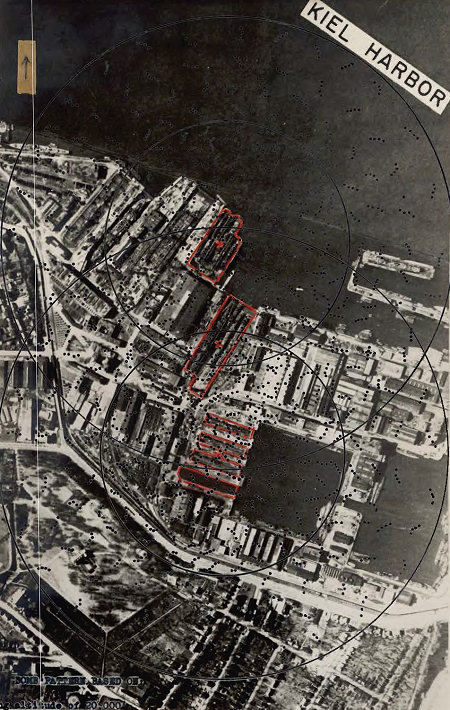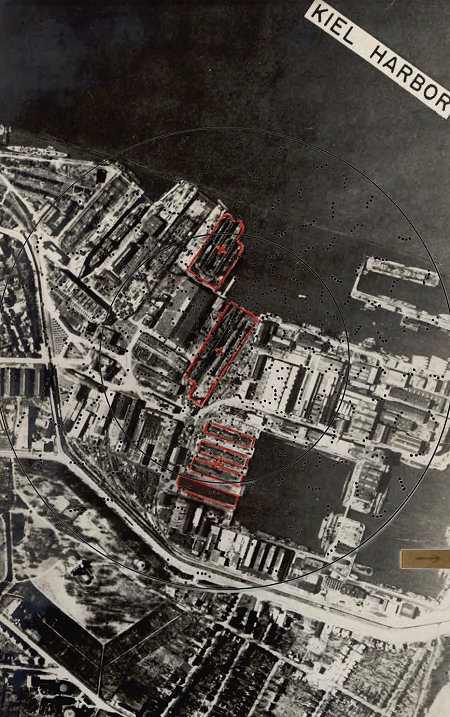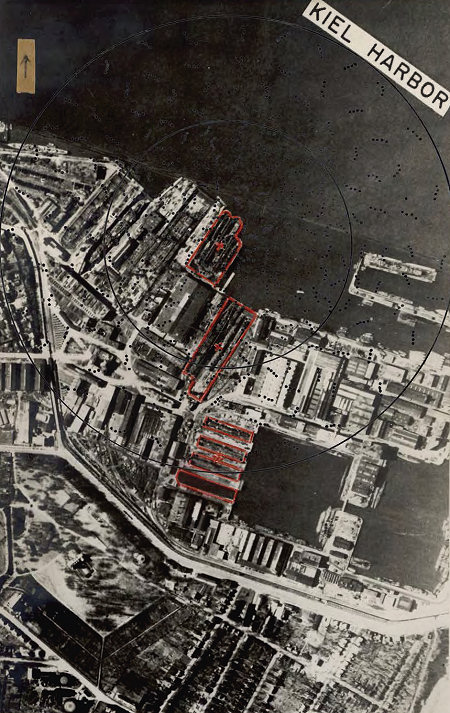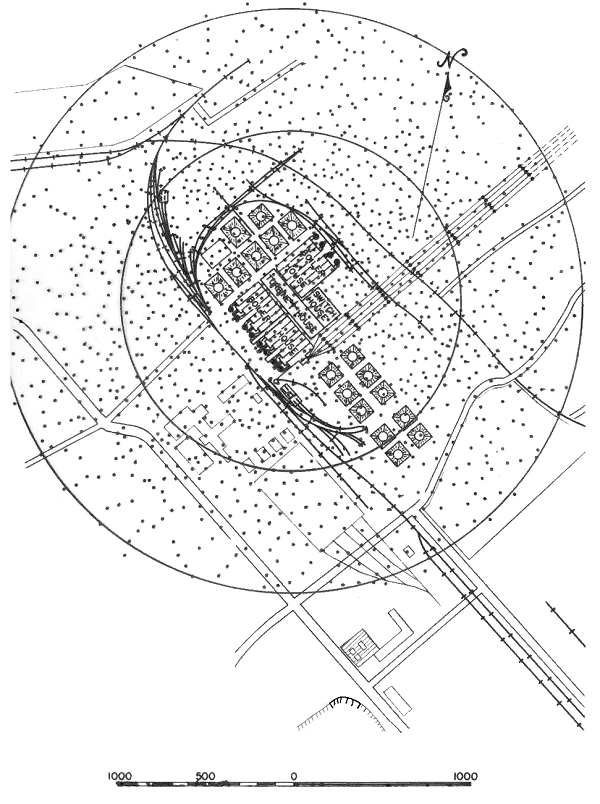
A.W.P.D.-42Bombing Accuracy |
BOMBING ACCURACY
The operations of the U. S. Army Air Forces in daylight bombing of defended objectives in German occupied Europe have been too limited to establish a precise gauge of bombing accuracy. Those operations have, however, definitely established the fact that:
It is perfectly feasible to conduct precise bombing operations against selected precision targets, from altitudes of 20,000 to 25,000 feet, in the face of antiaircraft artillery and fighter defenses.
The 97th Bombardment Group, which conducted these operations, was ill-trained in comparison with other heavy bombardment units of the Army Air Forces. The bombardiers had had little opportunity to practice. Hence, the degree of accuracy which may reasonably be expected of bombardment groups in the European Theater should actually improve in the future. However, in computing the bombing expectancy of U.S. Bombardment Forces operating in daylight in this Theater, this study will be based upon the results of actual, experience in combat operations, only.
An analysis of the combat bombing results of the 8th Bomber Command over German occupied Europe reveals average circular errors varying from 390 feet to 2,890 feet from bombing altitudes of 20,000-24,000 feet. After evaluating the effects of the percentage of obviously wild shots and the percentage of hits close to aiming points, it is concluded that the average circular error to be expected in the long run from 20,000 feet over German occupied Europe by this U. S. bombardment force is approximately:
1,000 feet.
This figure of 1,000 feet is approximately 1.5 times the average target practice error of the type organization being dispatched to the European Theater.
In computing the number of bombs which must be dropped to obtain the desired number of hits against each target selected, the following procedure has been used.
a. The target has been analysed and the particular point to be destroyed has been selected.
b. The structure has been examined and the proper type bomb to achieve destruction has been selected.
c. The dimensions of the selected target point have been determined.
d. The number of individual bombs which must be dropped in order to obtain a 90% (nine to one) probability of obtaining at least the number of hits desired has been determined by applying the Law of Errors (Probabilities), based upon the above stated circular average error of 1000 feet. Thus there is being provided a force adequate to insure a nine to one probability of completely destroying, the selected target in one mission.
Such a probability of success is far in excess of that normally ascribed to any military operation.
There is, of course, a tremendous amount of incidental damage to be expected from the hundreds of bombs which drop near the aiming point but do not strike the particular part of the target selected.
Following are two bomb plots drawn to scale of two typical targets: The submarine-building yard at Kiel, and an electric power station at Goldenberg.
The incidental destructive effect of bombs which do not strike the selected aiming points is at once apparent. In the Kiel target there are three aiming points, and the overlap of bombs dropped provides a very dense distribution.
Of the 3,360 bombs drooped against the submarine yard at Kiel, 3,024 should fall within the 90% circles shown. Of these bombs:
242 hits are shown on submarine-building slips
1862 hits are shown on buildings in the yard
making a total of 2,104 bomb hits which create direct damage to the installation.
Of the 1,728 bombs dropped against the power plant at Goldenberg, 1,555 should fall within the 90% circle shown. Of these bombs:
19 hits are shown on the turbine house
70 hits are shown on the boiler houses
10 hits are shown on the switch house
165 hits are shown on other buildings
making a total of 264 hits on the power plant.
An addition of 15% of theoretical requirements for each target has been provided to care for aircraft which are shot down or which fail to find the target.
– – – – – – – – – – – – – – – – – – – – – – – – – – – – – – – – –
432 Releases, 4-bomb Trains, Bomb Spacing 75'.
Based on:
Bombing Altitude of 20,000'.
Average Circular Error of 1,000'.

OF A TOTAL OF 1,728 BOMBS,
864 bombs, (50%), are within the inner circle.
1,555 bombs, (90%), are within the outer circle.
173 bombs, (10%), are outside the outer circle and are not plotted.
SCALE
1 inch = 508 feet
– – – – – – – – – – – – – – – – – – – – – – – – – – – – – – – – –
BOMB PATTERN BASED ON:
Bombing Altitude of 20,000'
Average Circular error of
1,000'.
Three aiming points; 280 releases on each using trains of
four bombs with 40' spacing.
Of a total of 1,120 bombs dropped:
560 (50%) are within the inner circle.
1,008 (90%) are within the inner circle.
112 (10%) are outside the outer circle and are not plotted.
